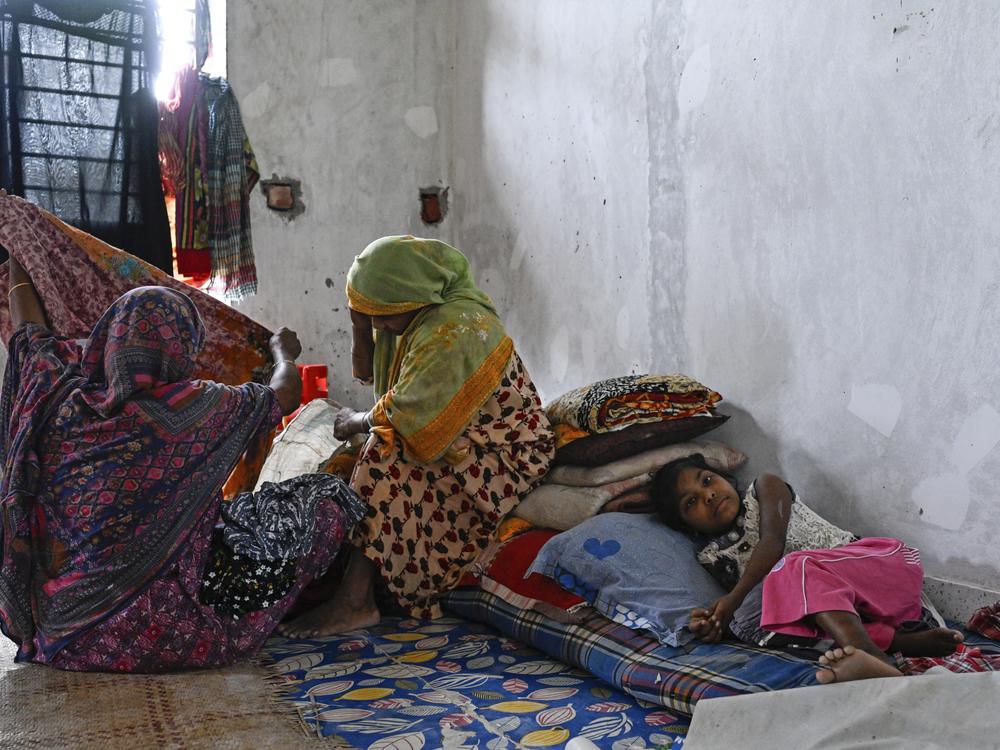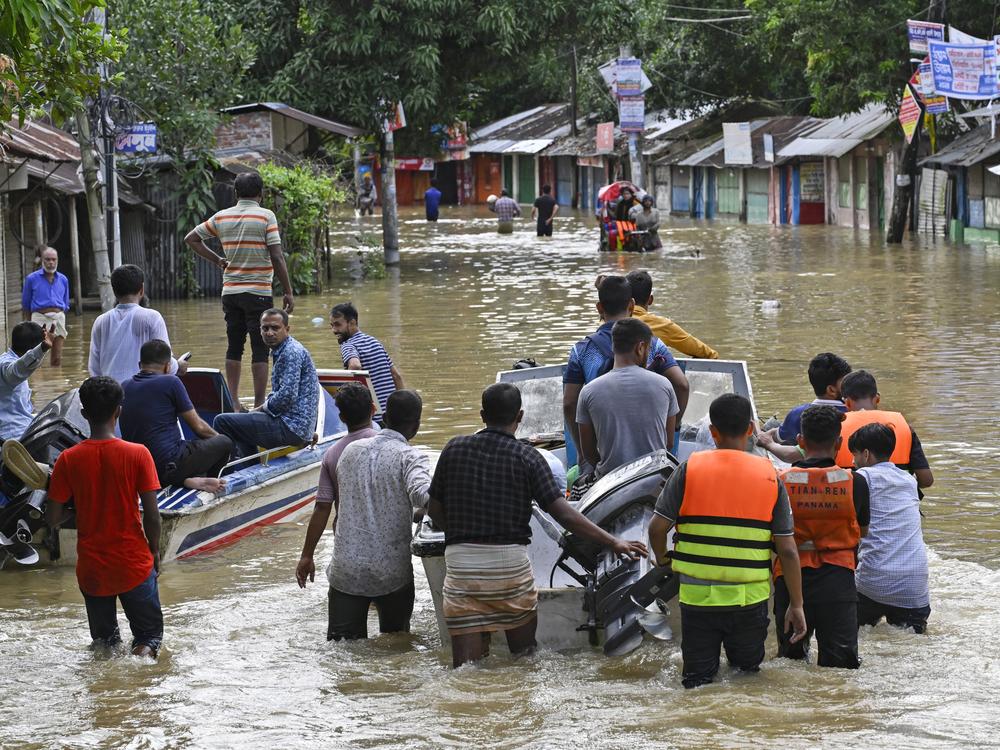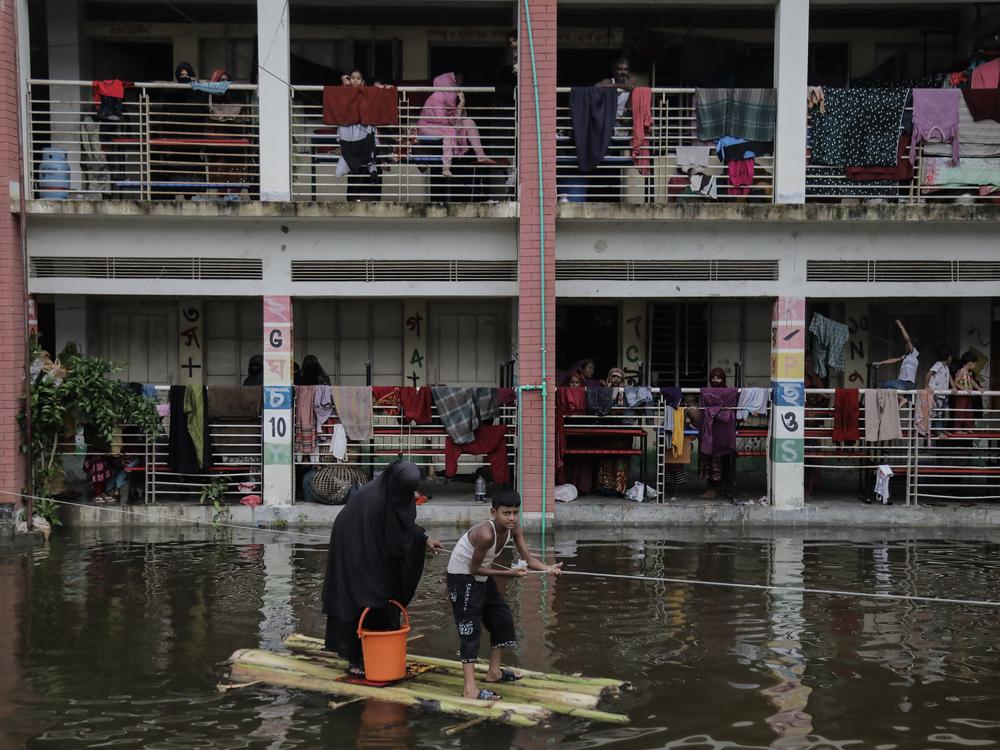Section Branding
Header Content
Severe floods causing health problems in south Bangladesh
Primary Content
NOAKHALI, Bangladesh — Nurul Haque wades slowly across a murky pool of water. He places one foot cautiously in front of the other, avoiding the dirt and debris that the floods have washed in. He holds his lungi, the sarong-like garment he wears to cover his legs, as high as he can. But it’s soaking by the time he reaches me.
Last month, his humble, two-room house became submerged in 3 feet of water caused by flash floods that swept across huge swaths of northeastern, eastern and southern Bangladesh.
Although most of the water has receded, it is lingering in some of the worst-hit areas of the country.
Haque told me he was terrified when the water started gushing in.
“When the floods happened, I was so tense," he said. "I couldn’t sleep. I had no idea where I would go, so I took my wife and children and we went to the shelter.”
Haque is one of an estimated 6 million people who were internally displaced following the worst floods Bangladesh has seen in more than three decades.
Eleven out of the country’s 64 districts were affected.
Haque’s home district of Noakhali is in the south of the country. It’s a five-hour drive south from the capital, Dhaka, and it’s where Haque has lived all his life. He said he had never seen anything like the floods in his entire life.
The shelter Haque went to was one of thousands dotted across northeastern, eastern and southern Bangladesh: schools, mosques and other public buildings provided temporary accommodation for the displaced, while aid agencies and local volunteers distributed food, water and basic hygiene kits.
Many homes were washed away, while others were damaged beyond repair.
Despite this, most people had no choice but to return home a few weeks later.
Haque had planned to earn some money by fishing to pay for his daughter’s wedding. “The fish have all gone," he said. “I had hoped to marry my daughter off. The seedlings have also been washed away. Now I have nothing.”
Haque lifted his threadbare vest to show a deep scar — a reminder of a recent operation on his intestines. He said his stomach hurts when he walks through the waters.
Others with health issues have also suffered.
They also faced other problems. Most of the men in these areas are small-scale farmers or fishermen. They found that the fish, their crops and seedlings had been washed away. Now they are left without an income.
Ashish Damle, Bangladesh country director for Oxfam, explained: “The unique feature of these floods is that people did not get time to prepare themselves. They could just save their lives. The lasting impact is on their livelihoods.”
Damle also explained that the floods were not caused simply as a result of the monsoon rains; industrialization has also played a part.
“Within the last two decades, the urbanization in Bangladesh has grown more than 60%,” he said, “which means the areas which were typically known as rural areas or typical villages are now being subjected to more industrial exposure. Urbanization means more population growth in those areas, more construction, and obviously it has an impact on the entire aquatic ecosystem.”
Thofura Bibi, 58, lives in a one-bedroom house with her husband and five children.
During the floods, an entire side of the house was torn apart. All that remains is a mangled mound of sopping wood and rusty metal.
She said walking through the waters has inflamed her joints.
“I got joint pain in both my knees from walking through the water all these days,” she said.
In many respects, the floods represent the first significant challenge for Bangladesh’s new interim government, headed by Nobel laureate Muhammad Yunus, to fulfill its commitment to prioritize the needs of the people. Yunus came to power last month.
Local government official Muhammad Sarwar Uddin said the government was providing 200 tons of rice and giving out cash as part of the relief effort.
The fear now is that there will be more floods soon, which the government will struggle to combat.
Damle said: “We are already in a climate emergency, so that means we need to have a consistent long-term sustained response. I think that level of awareness is lacking at all levels, particularly among policymakers.”
When the waters rise again, people like Haque will be the most affected — and most likely they will lose what little they have.



